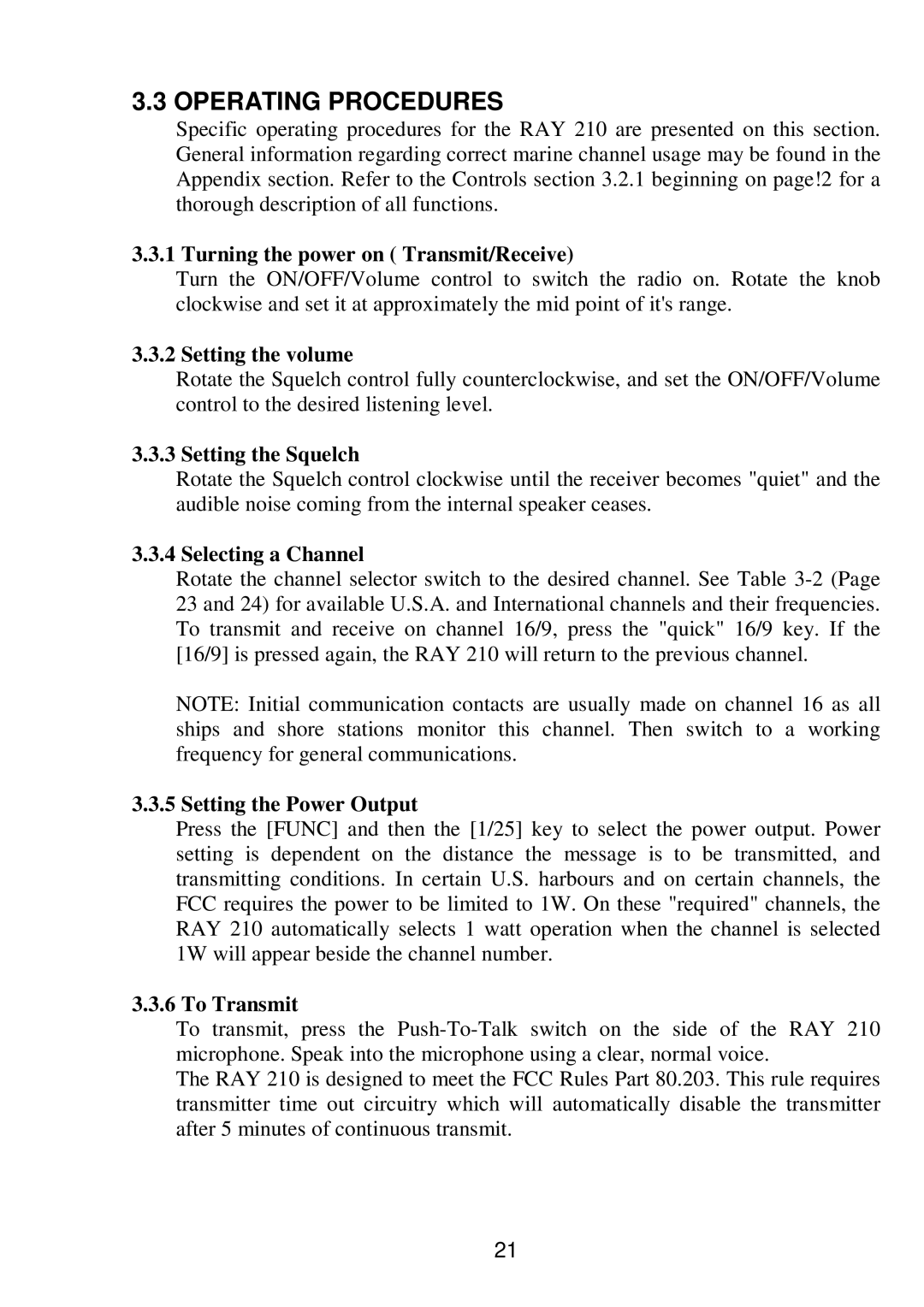3.3 OPERATING PROCEDURES
Specific operating procedures for the RAY 210 are presented on this section. General information regarding correct marine channel usage may be found in the Appendix section. Refer to the Controls section 3.2.1 beginning on page!2 for a thorough description of all functions.
3.3.1 Turning the power on ( Transmit/Receive)
Turn the ON/OFF/Volume control to switch the radio on. Rotate the knob clockwise and set it at approximately the mid point of it's range.
3.3.2 Setting the volume
Rotate the Squelch control fully counterclockwise, and set the ON/OFF/Volume control to the desired listening level.
3.3.3 Setting the Squelch
Rotate the Squelch control clockwise until the receiver becomes "quiet" and the audible noise coming from the internal speaker ceases.
3.3.4 Selecting a Channel
Rotate the channel selector switch to the desired channel. See Table
NOTE: Initial communication contacts are usually made on channel 16 as all ships and shore stations monitor this channel. Then switch to a working frequency for general communications.
3.3.5 Setting the Power Output
Press the [FUNC] and then the [1/25] key to select the power output. Power setting is dependent on the distance the message is to be transmitted, and transmitting conditions. In certain U.S. harbours and on certain channels, the FCC requires the power to be limited to 1W. On these "required" channels, the RAY 210 automatically selects 1 watt operation when the channel is selected 1W will appear beside the channel number.
3.3.6 To Transmit
To transmit, press the
The RAY 210 is designed to meet the FCC Rules Part 80.203. This rule requires transmitter time out circuitry which will automatically disable the transmitter after 5 minutes of continuous transmit.
21
